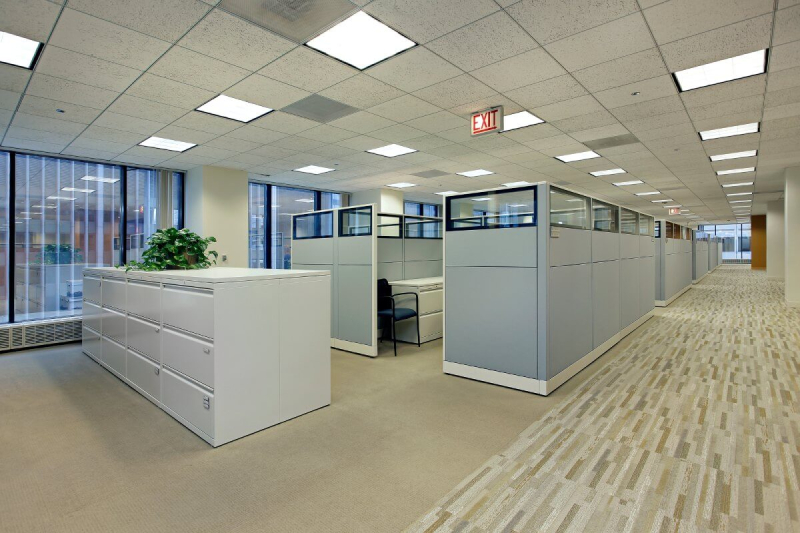Office space can be a big part of owning your own business. It can be a pretty big expense, too… And of course, the past two years might have changed how you do business in that East Coast office – a lot.
Maybe you have more people working from home. Maybe you’ve had to lay off some, at least for now. Odds are good that if you take a peek out over your office these days, you won’t see what you saw in 2019.
It might be time to ask: Do I still need as much office space?
Before you answer that question…
So, you and I both know that things are a hot mess over at the IRS right now.
With staffing shortages and backlogs plaguing the agency coupled with an inability to reach a real live person most of the time, this year is promising to be particularly difficult for filing taxes (on top of the past two already insane years). The IRS said so themselves.
That’s why it’s so important to get things in order now. You can’t afford to put your business in jeopardy by waiting too long (or until the last minute). The IRS’s delays could spell out disaster especially if there are errors or missed things in your filing.
Get a tax appointment scheduled right away because time is of the essence this year of all years:
(412) 856-8799
Now, if your answer to my question above is “no,” let’s look at what your options are for saving on office space…
Saving on Office Space For Your East Coast Business
“The biggest boss has the clearest desk.” – John Cho
Desks, cubicles, conference rooms: You probably dreamed about them when you imagined having your own business, but the fact today is, they may not be the must-haves they once were – especially when you start looking at how much of your workforce might stay virtual.
I want my employees where I can see them, you might be thinking. That’s only natural thinking for a boss. But don’t be in such a hurry to put that thinking ahead of your bottom line.
The American Institute of Certified Public Accountants found out in a recent survey that one in five CPAs and accounting firms expect some sort of office space reduction soon because of the pandemic. In a different survey, three-quarters of big business CEOs agreed, estimating that for every five employees they would wind up needing just three desks. Others said they’ll probably wind up for a while with a hybrid schedule where workers switch off being in the office and working from home.
The point is, maybe these companies no longer need as much space.
Which begs the question: Do you?Let’s talk about saving on office space.
Play the numbers game
What are you spending to maintain your East Coast office? This is probably a painfully clear number but you need to examine it in terms of how big your staff is … and, more importantly, how big your staff is going to be.
Let’s assume that you’ve decided changes in space might help your company. Grab a pencil and think about these questions:
- Over the next year or so, how many workers are going to be in your office on any given workday and who’s going to be remote?
- Ideally, do you want each employee to have the most possible space – or do you want to put the most workers you can into a given space?
- Do you like individual offices or open areas with cubicles and workstations? Can employees share a desk?
You probably already have a good idea of how much room your folks need (and don’t be shy about asking them for their ideas), but, if not, here are some general formulas:
- High density, about 80 to 150 square feet per employee, allows for open seating with rows of small desks (you might need to allow for more private meeting rooms with this layout).
- Average density, about 200 square feet per employee, gives a mix of open cube or desk space and private offices.
- Spacious density of about 250 and up square feet per employee allows mostly for large private offices.
- Common areas tend to eat up as much as a third of your office space. If you’re working on a budget, maybe it’s time to look for a deal where you can share those areas with another company.
Don’t forget space for reception, storage, and other housekeeping stuff, and ask your people about their needs and wants in office space – you may be paying rent on things they don’t even care about.
Multiply what kind of layout you want by the number of employees you’ll have going forward, and voila. Is this number more or less than what you have now?
If it’s less, you’ve got a saving on office space opportunity in your hand.
It’s the lease you can do
Any change in your need for office space naturally makes you wonder about your lease. Can you tinker with it?
Many commercial leases are long-term – sometimes a decade or more – but that doesn’t mean you don’t have wiggle room to negotiate as your business changes. Better the devil you know: Try working with your current landlord (assuming you’ve been a good tenant) in your search for less space.
About new commercial leases in general, look for the length of the lease; see if the rent stacks up against others in the area; watch for details like future rent hikes, hidden costs on “net leases” and termination clauses; and wrangle any favorable clauses that you can.
We can help you look at your books and see if changing office spaces is a smart move for you. Please don’t hesitate to reach out.
We’re here for you,
Buccigrossi and Associates
(412) 856-8799
Buccigrossi & Associates, LLC






